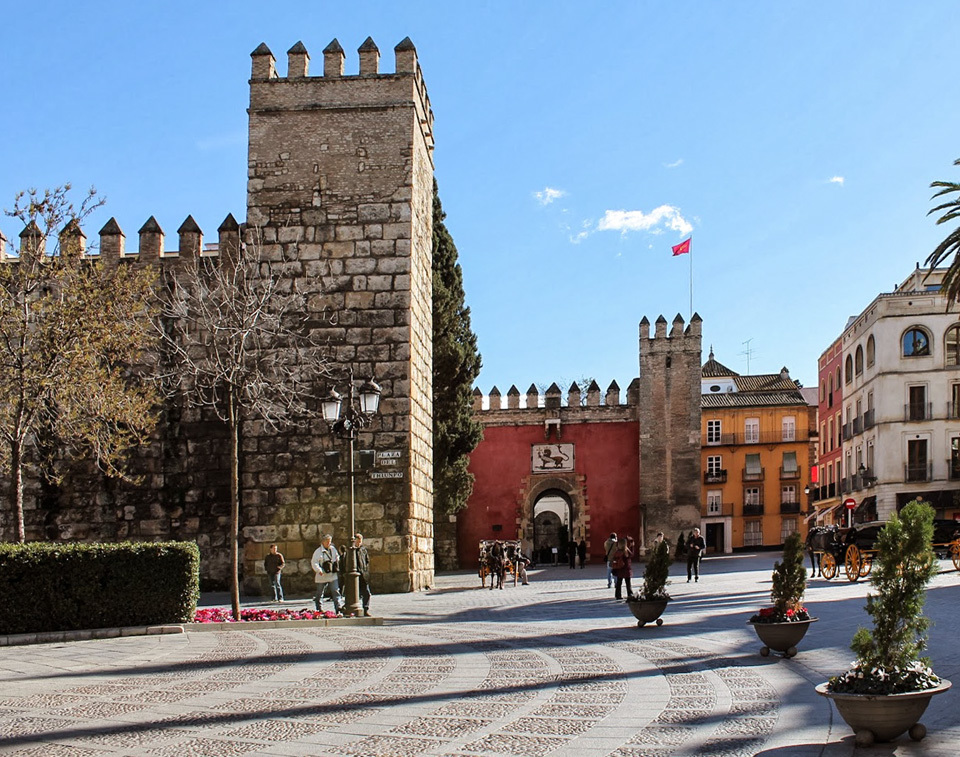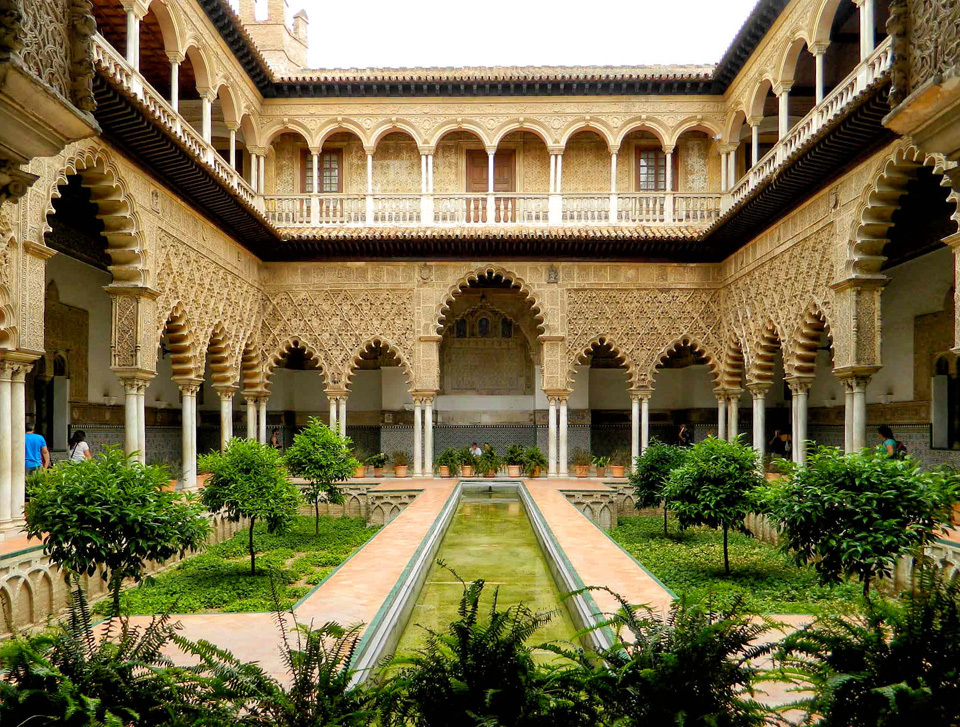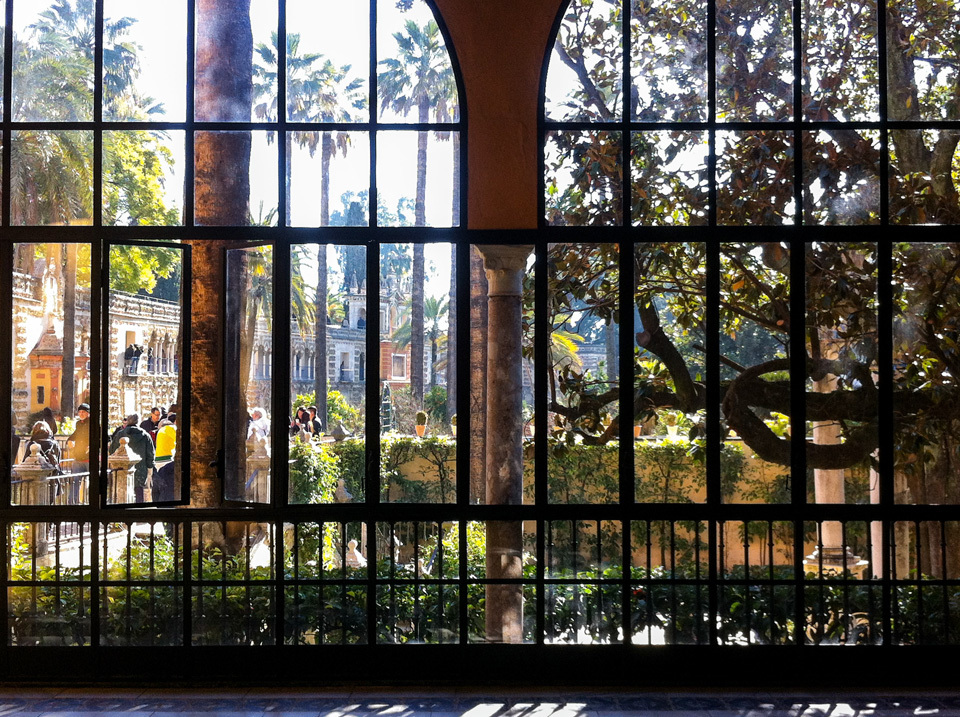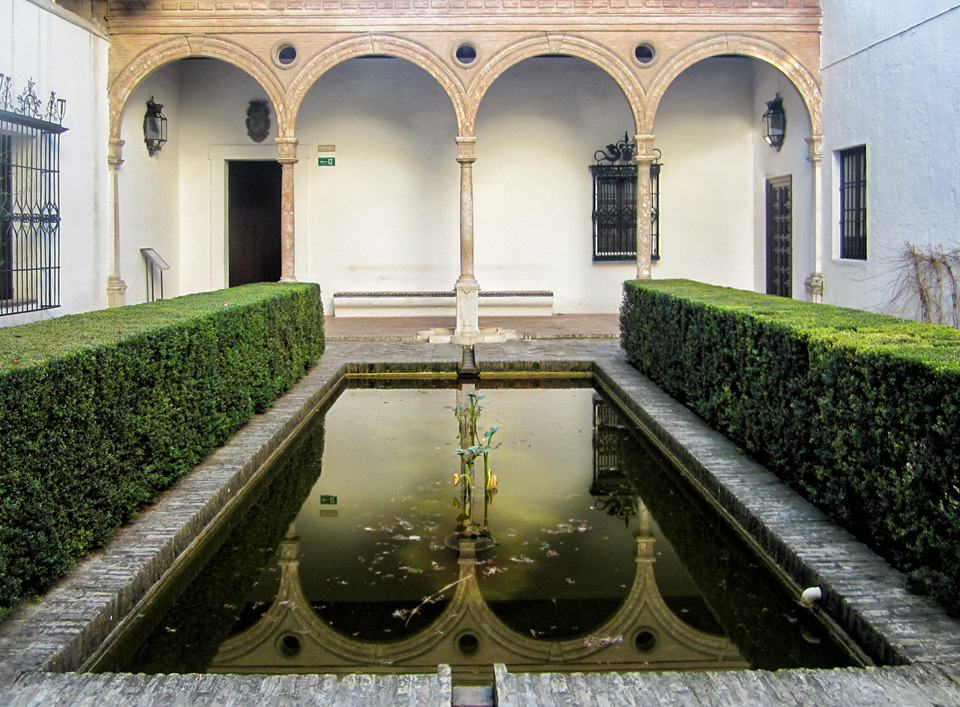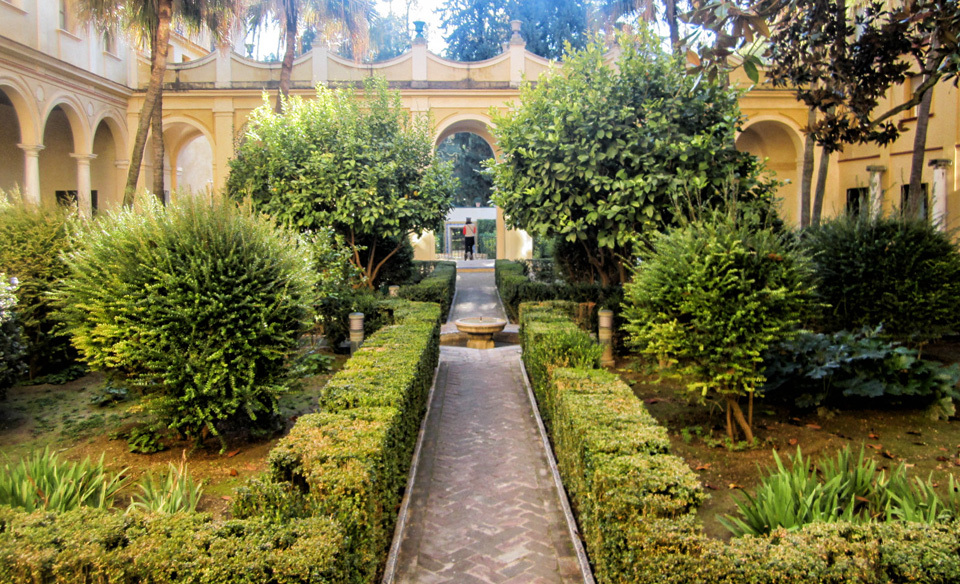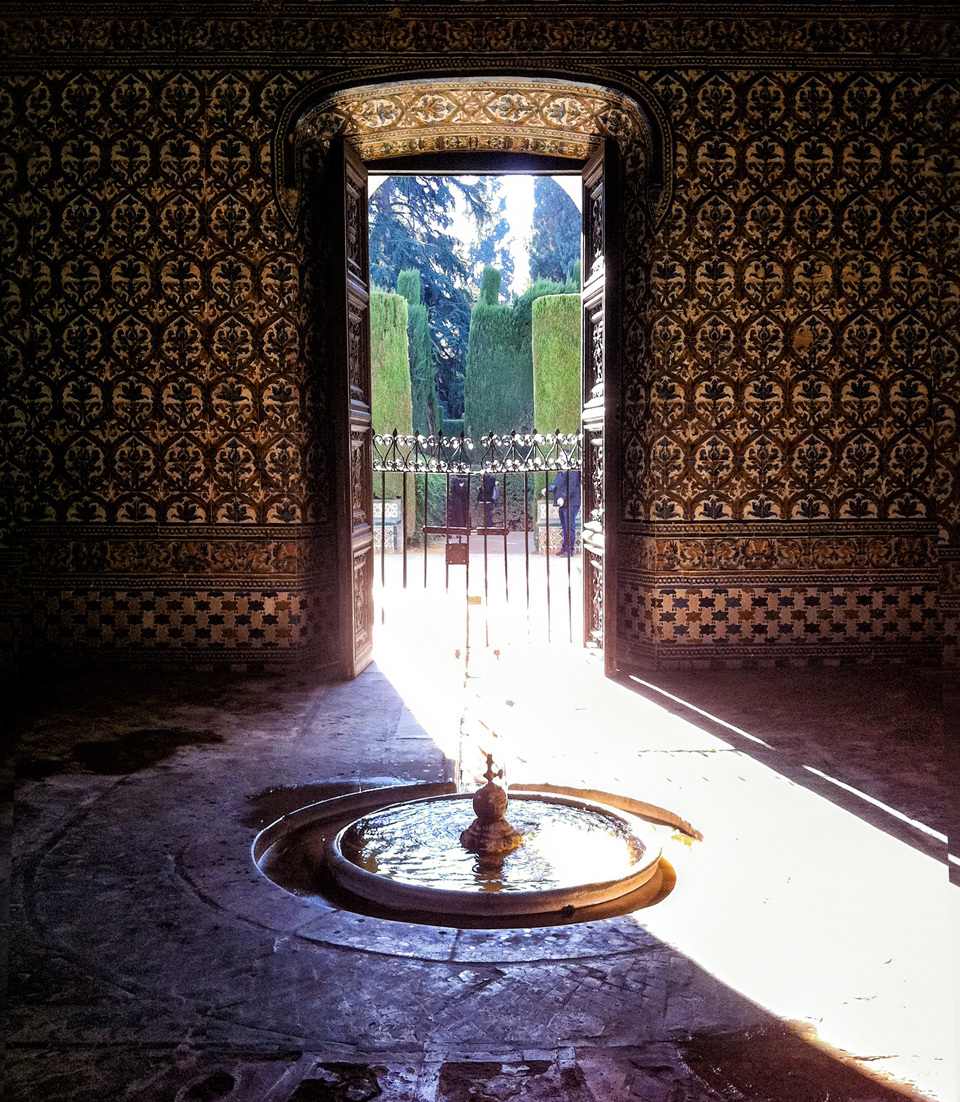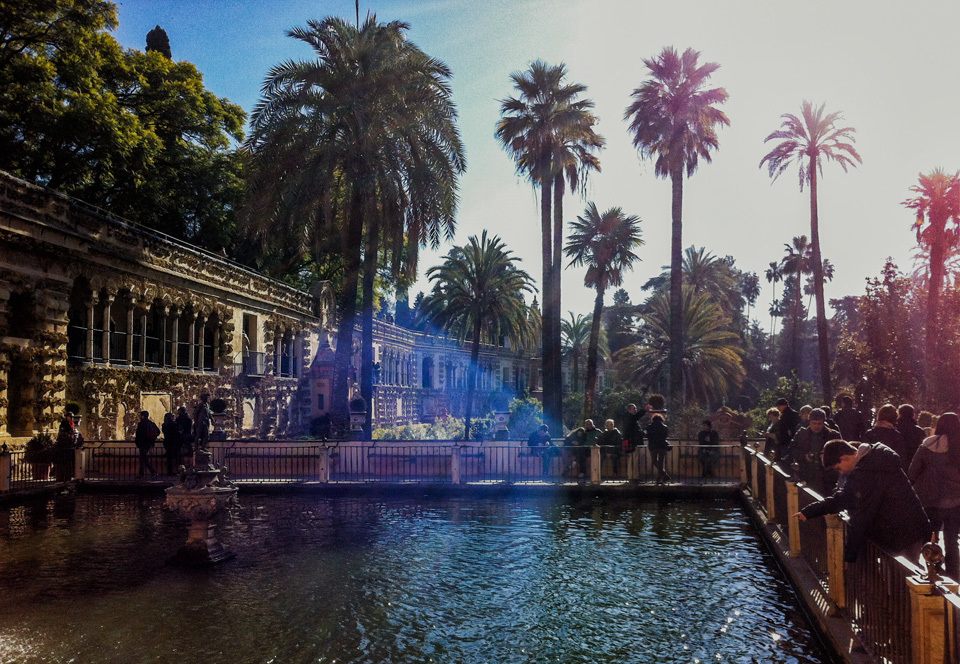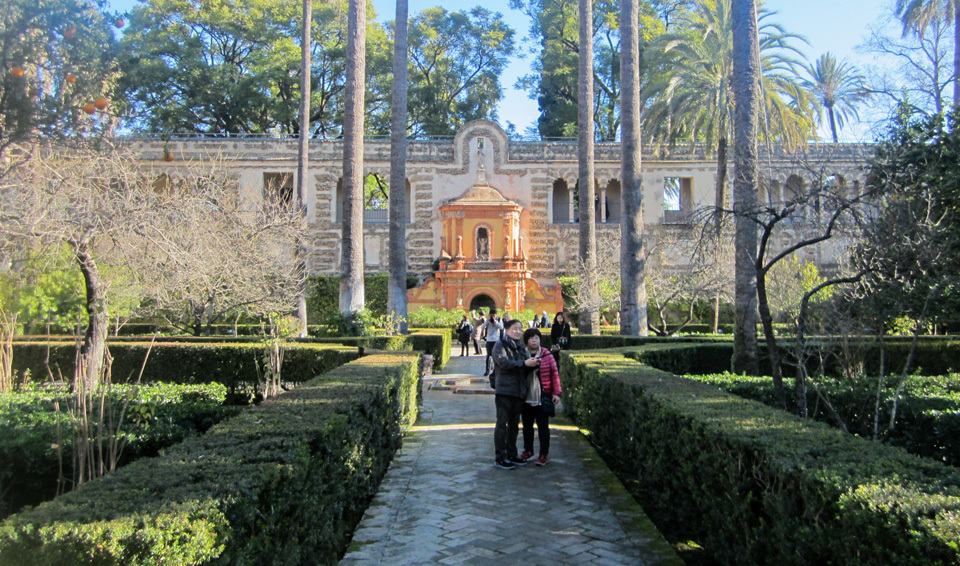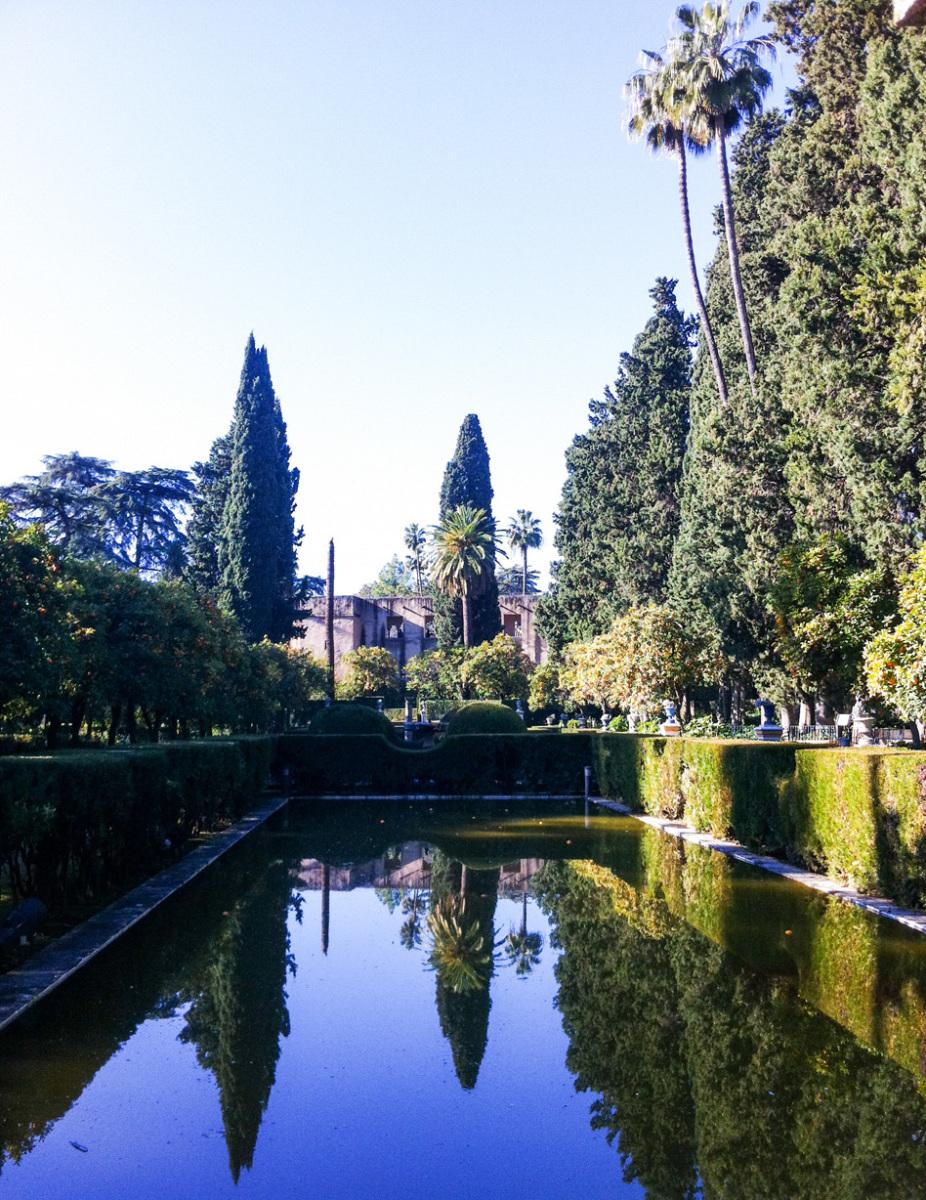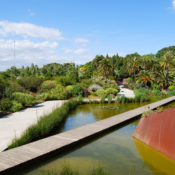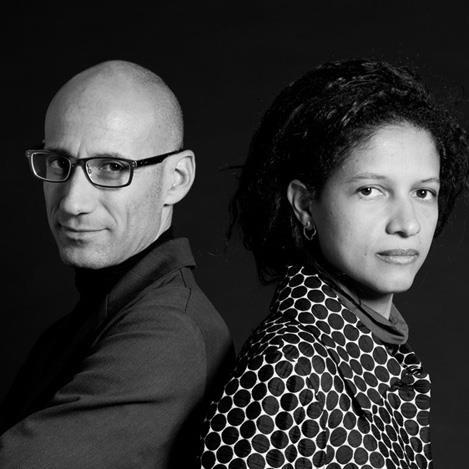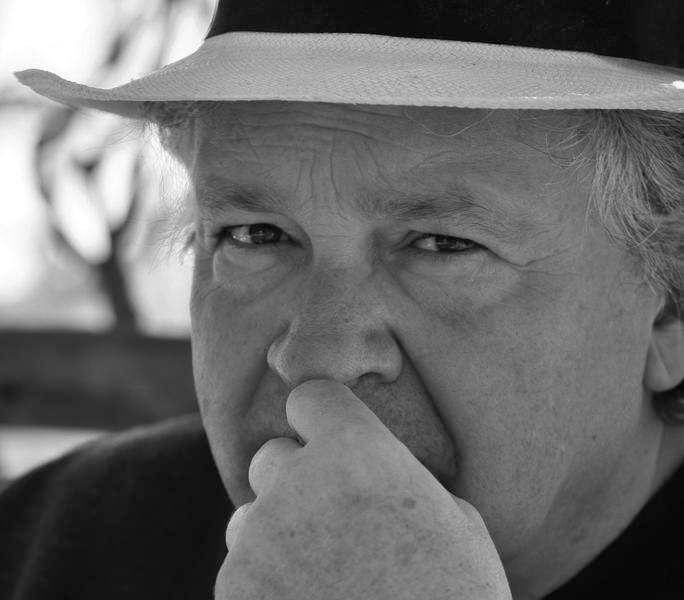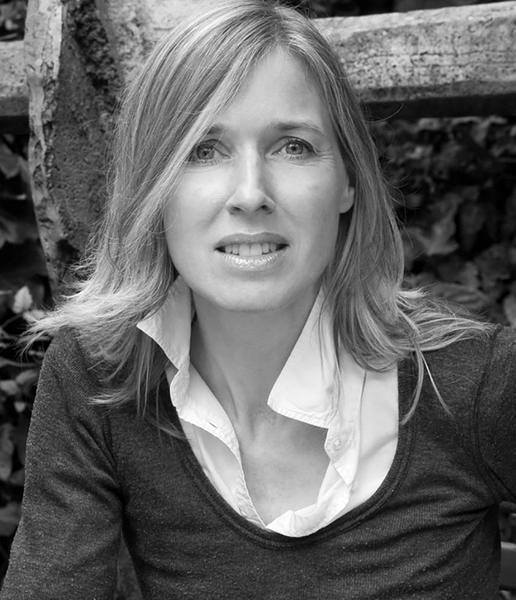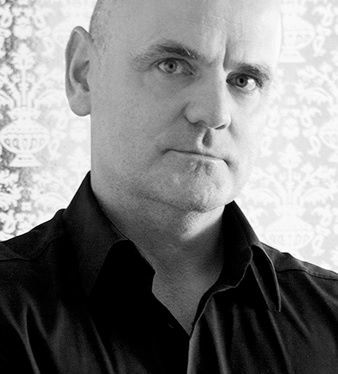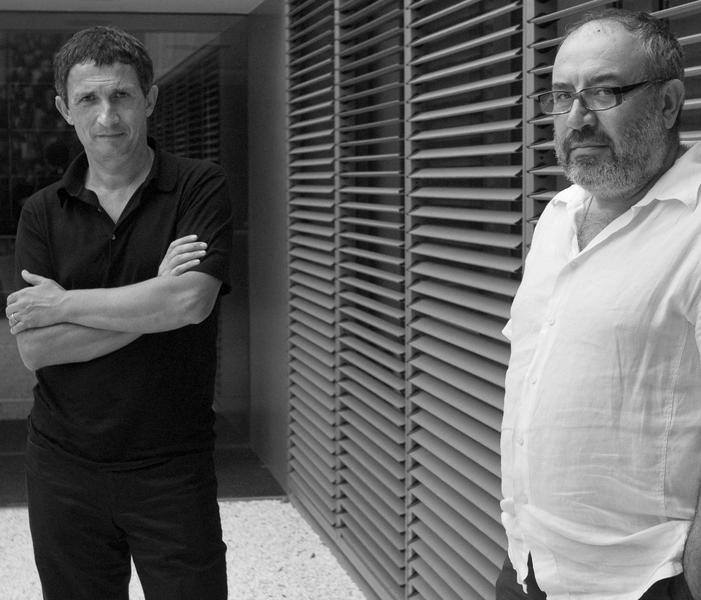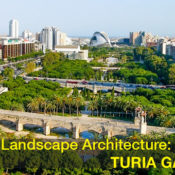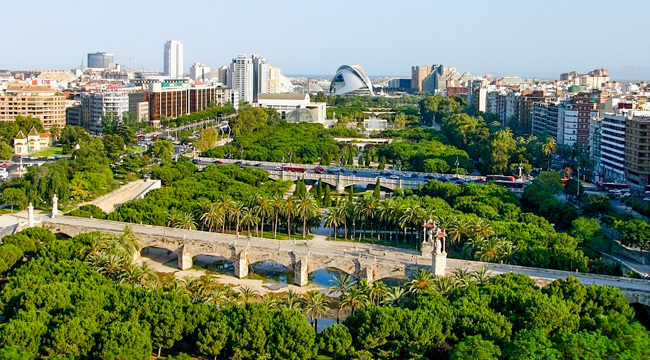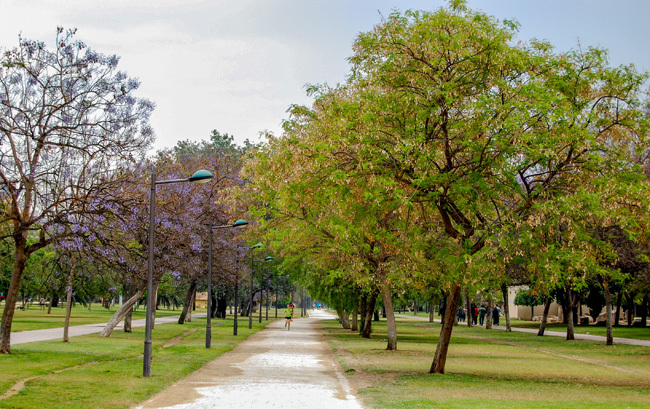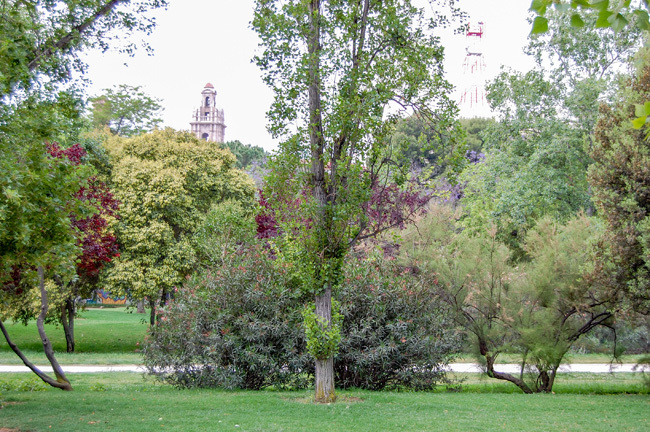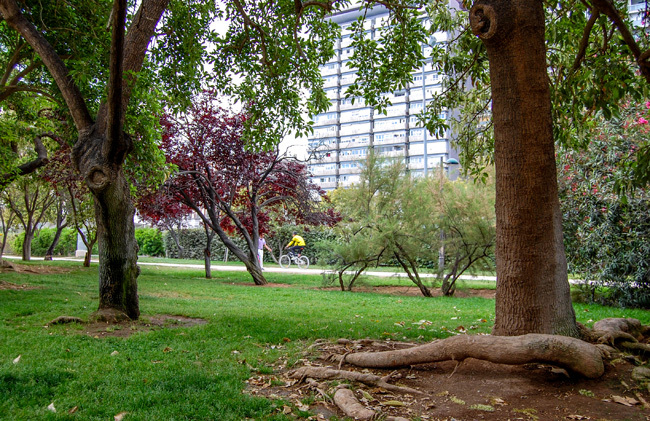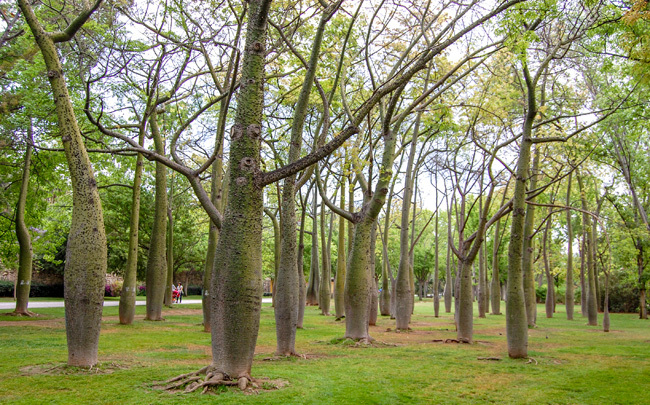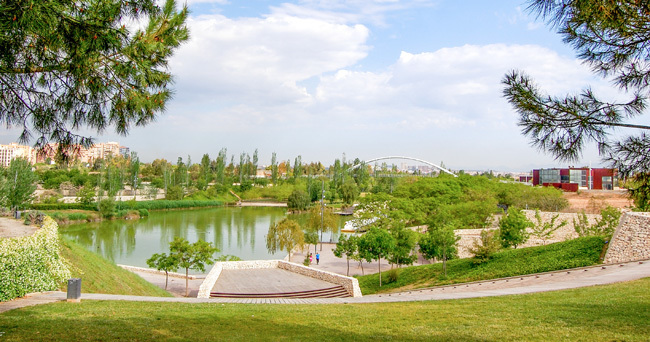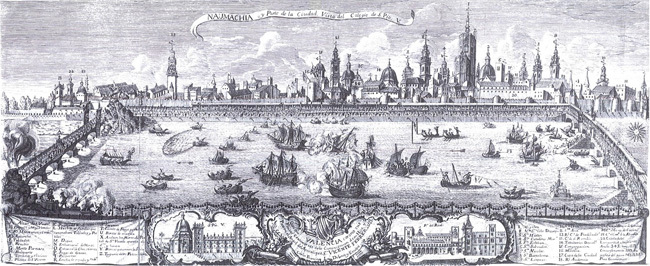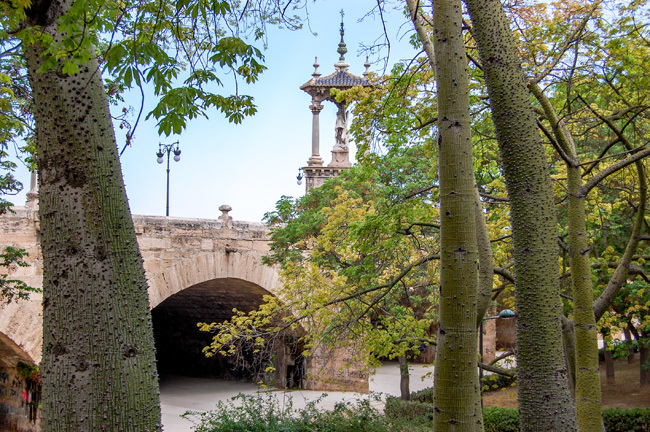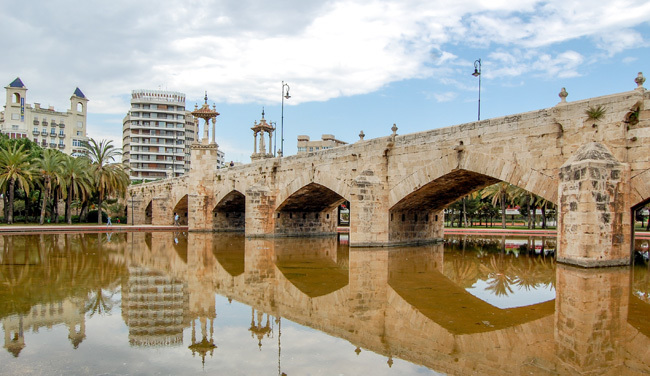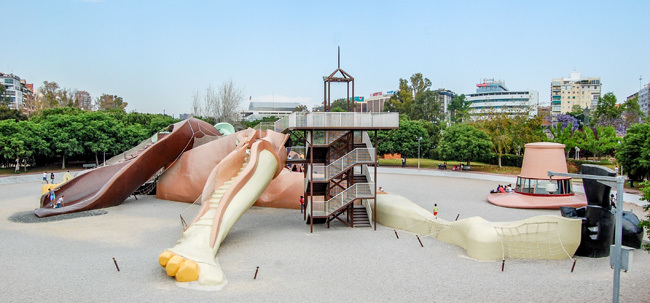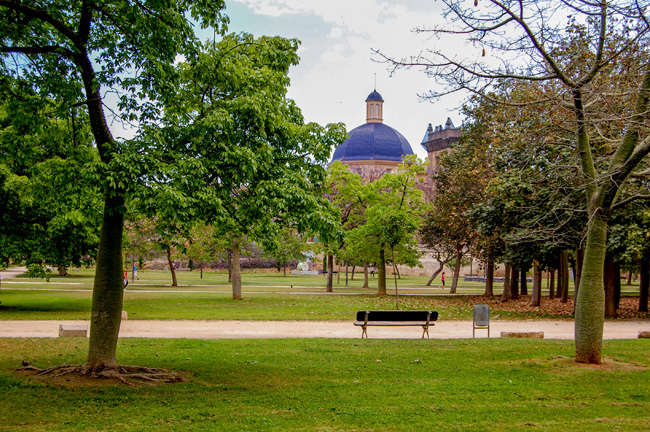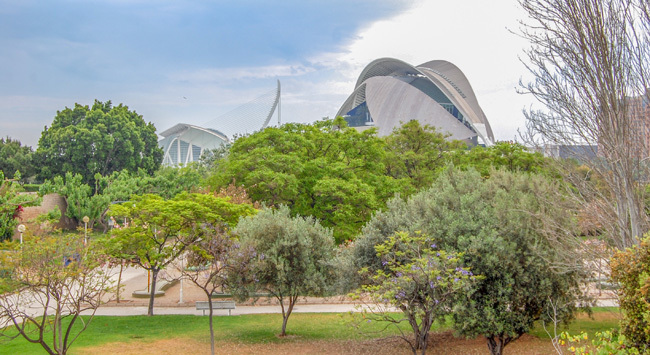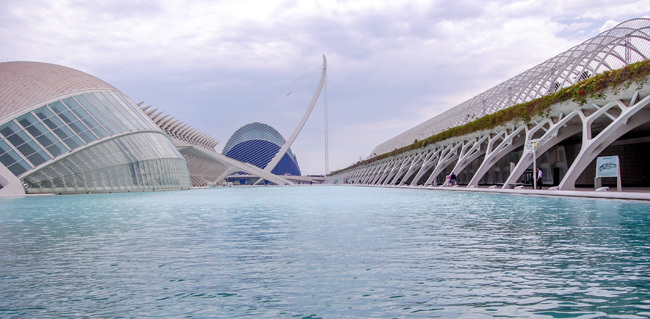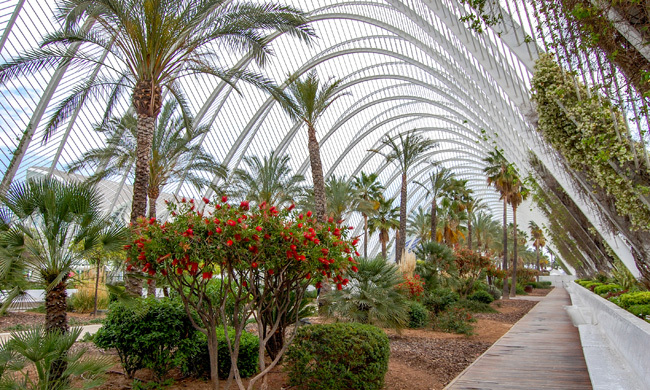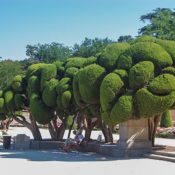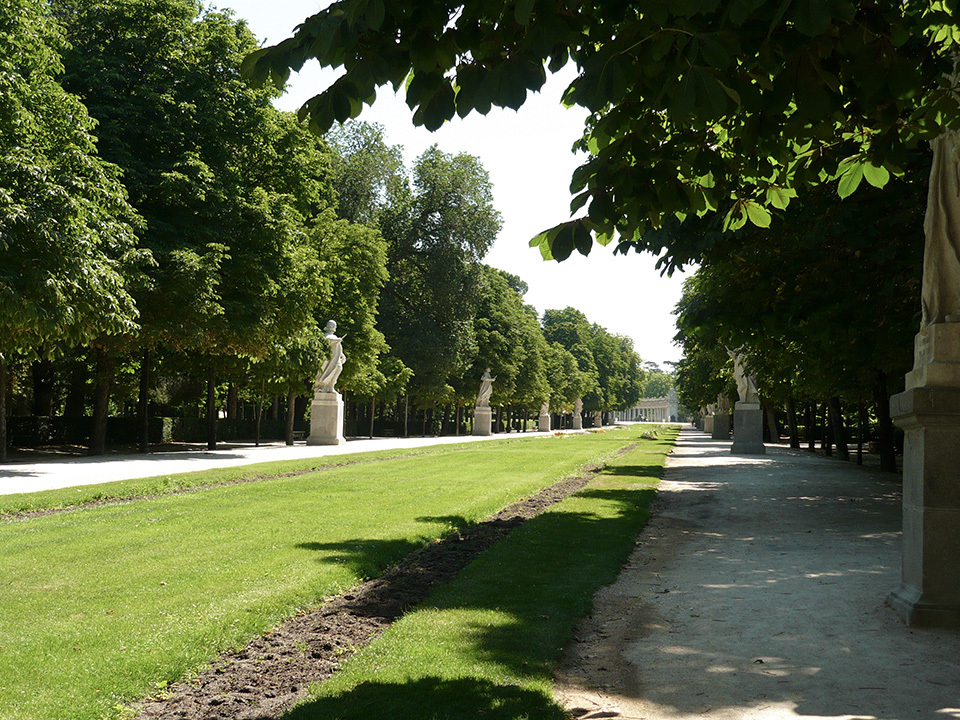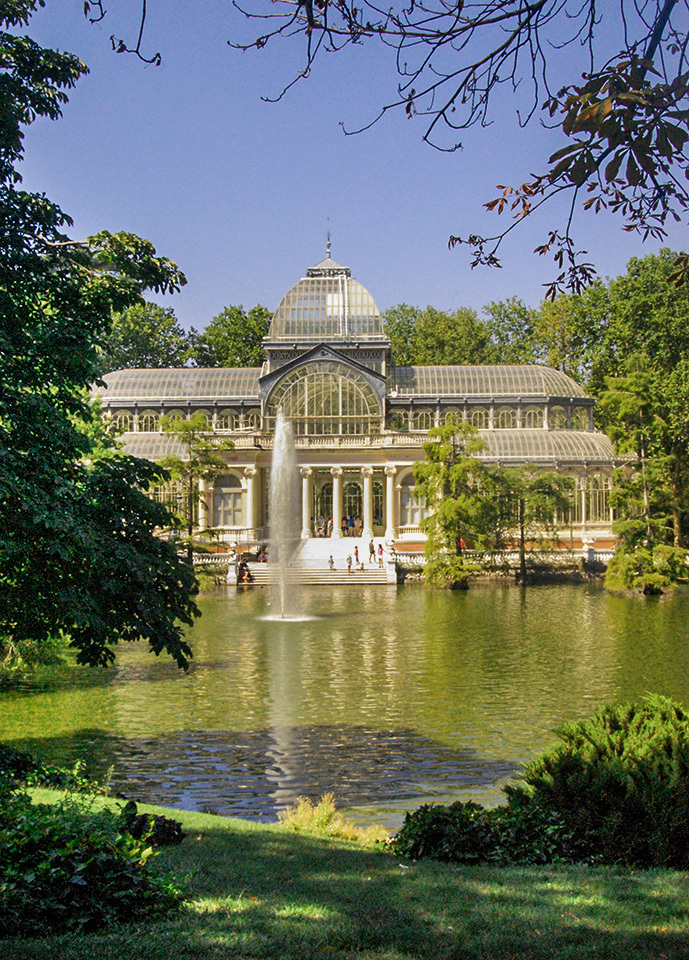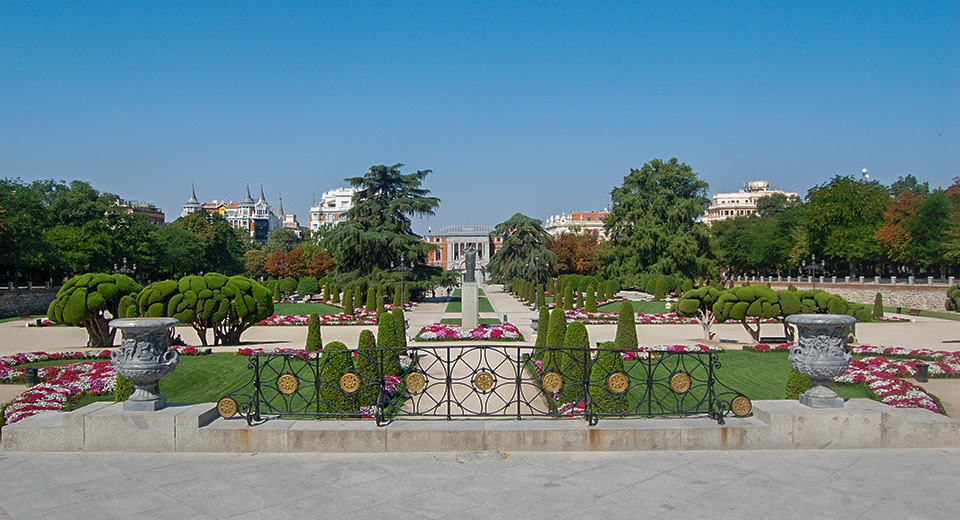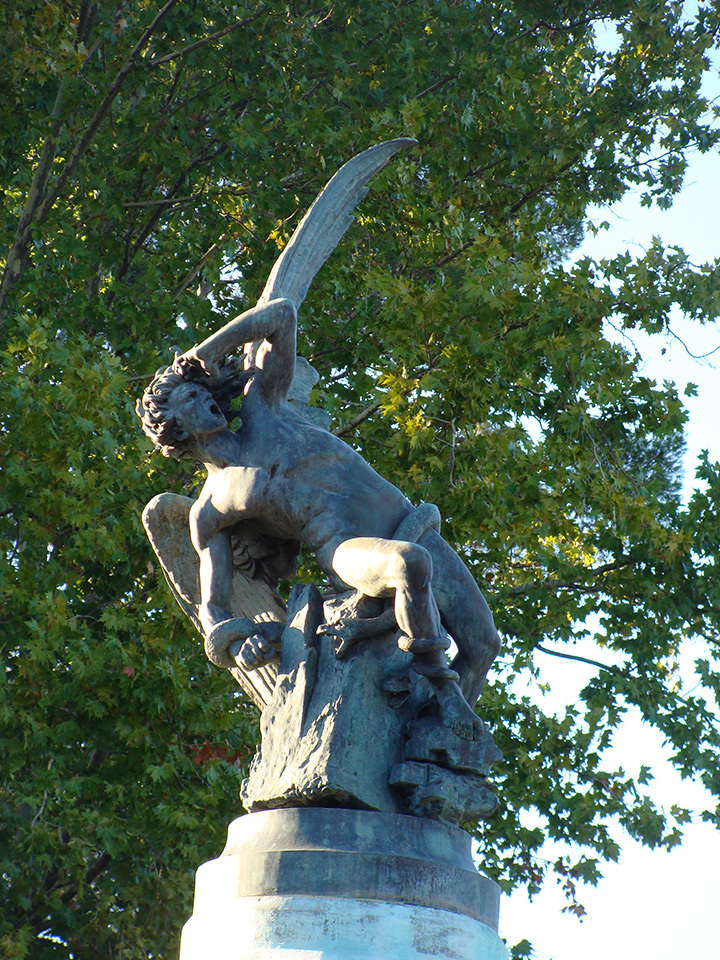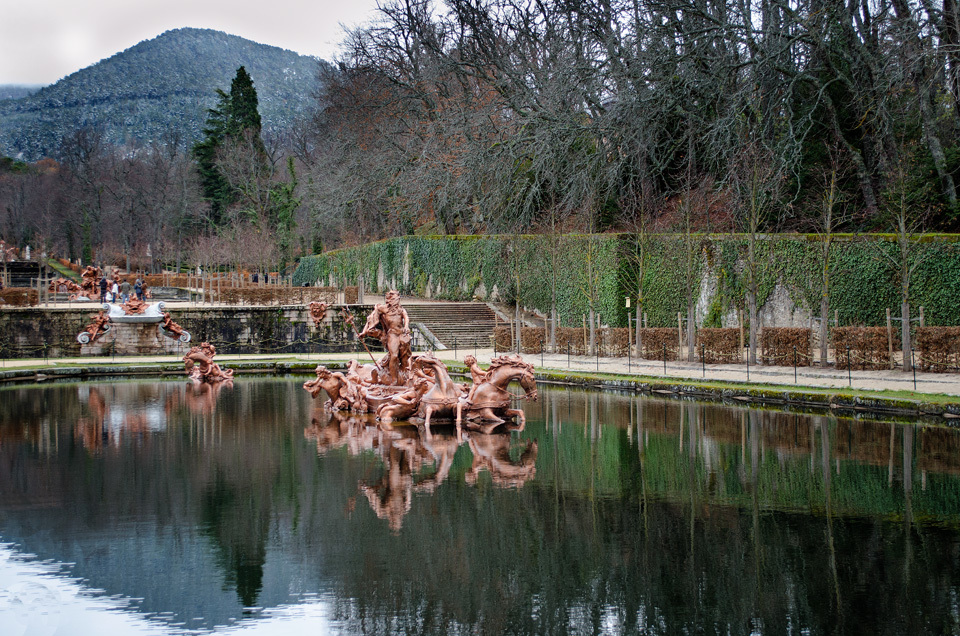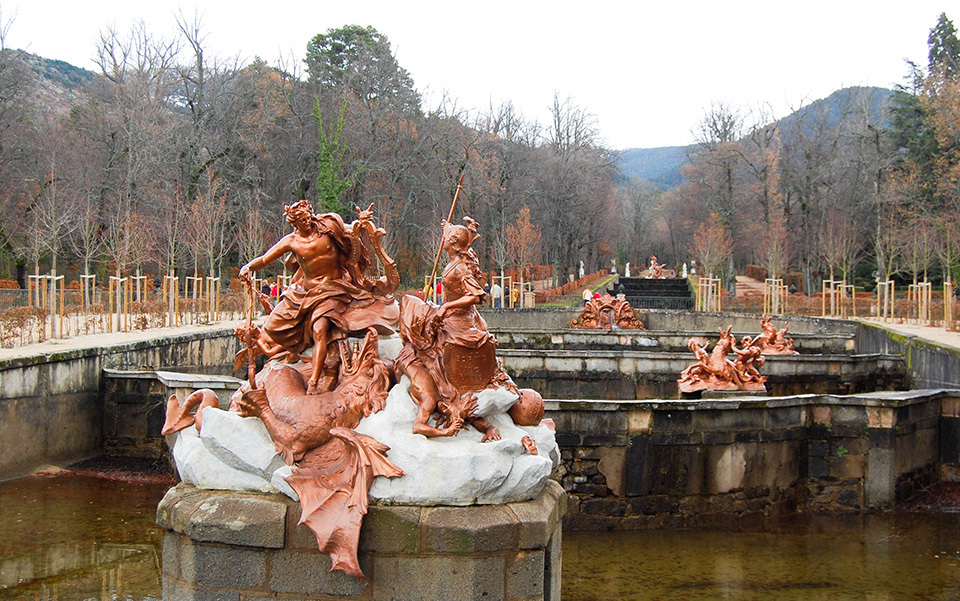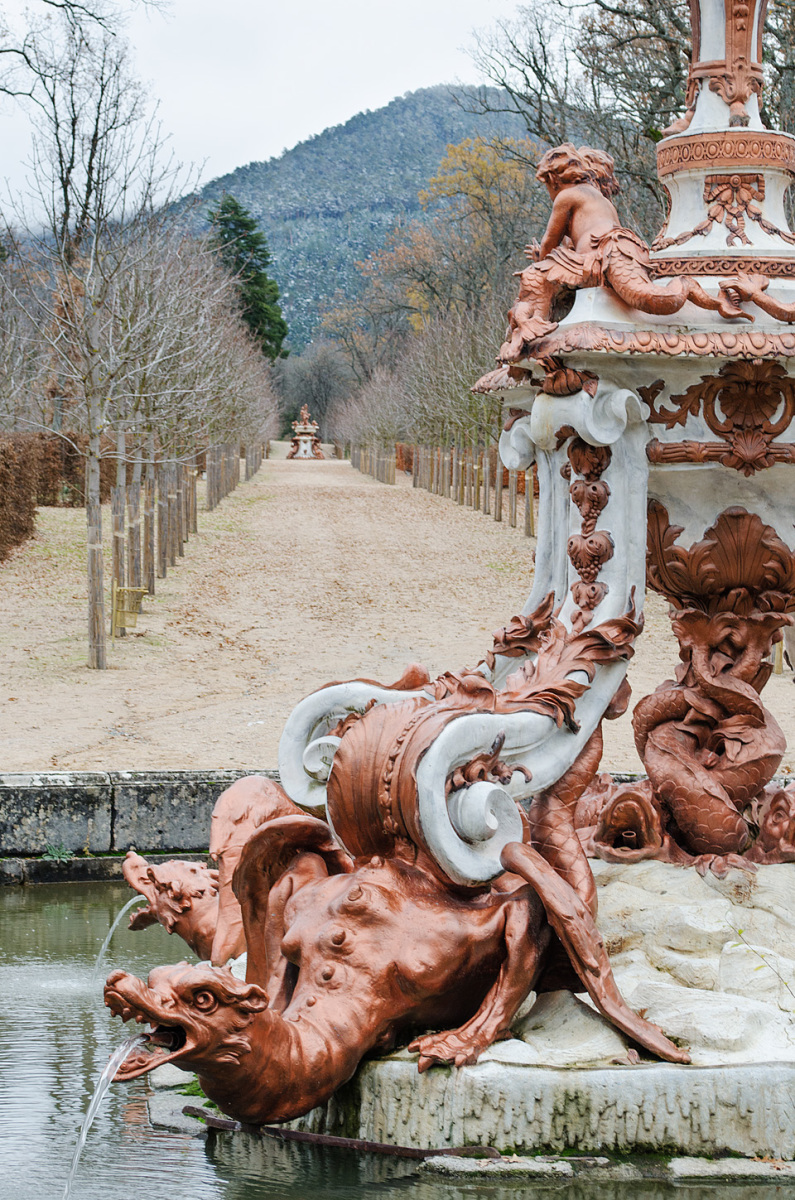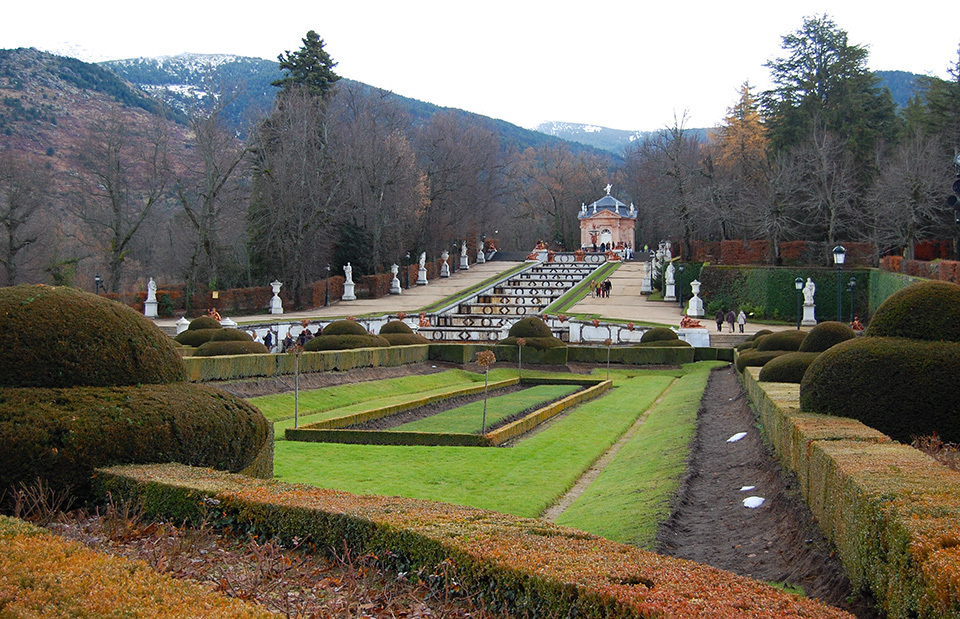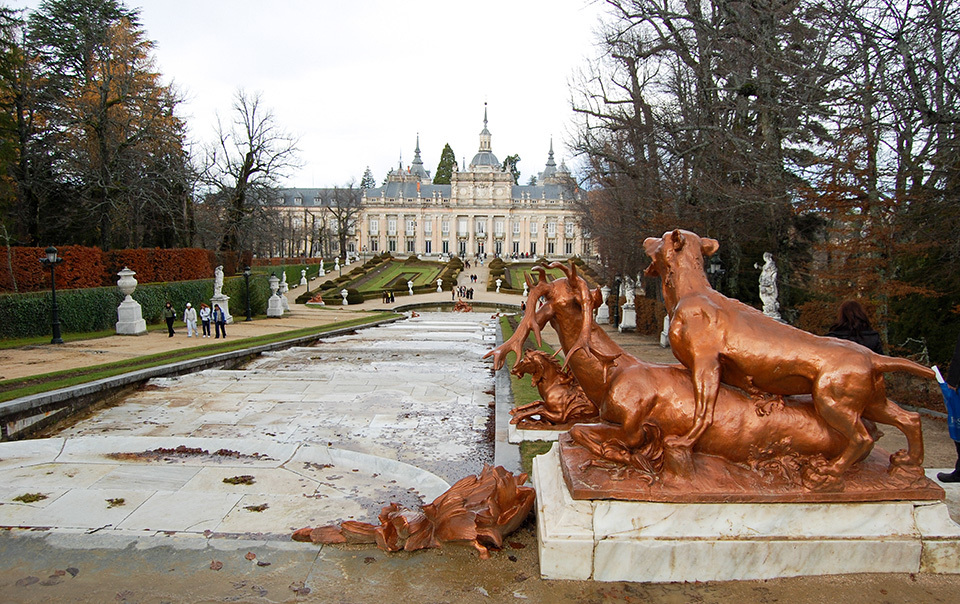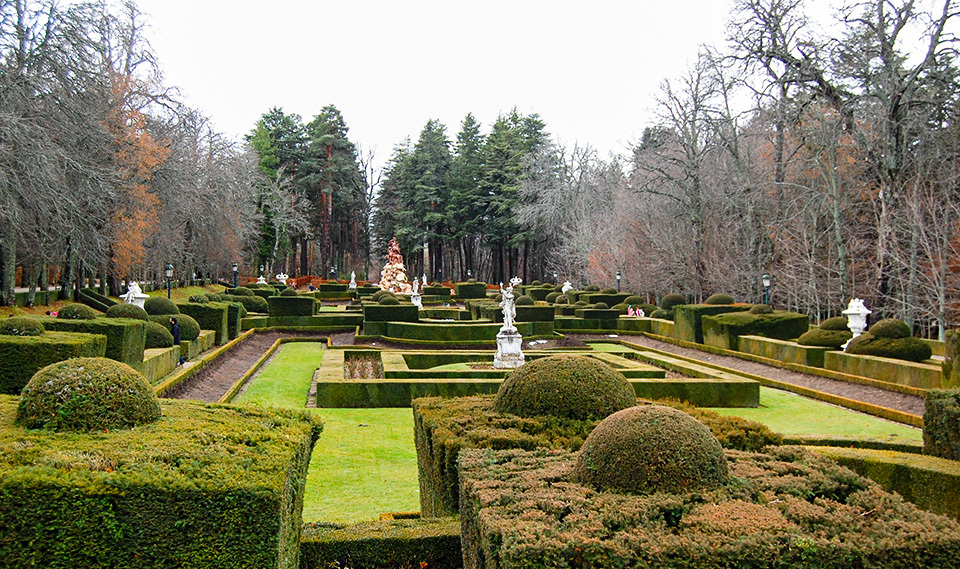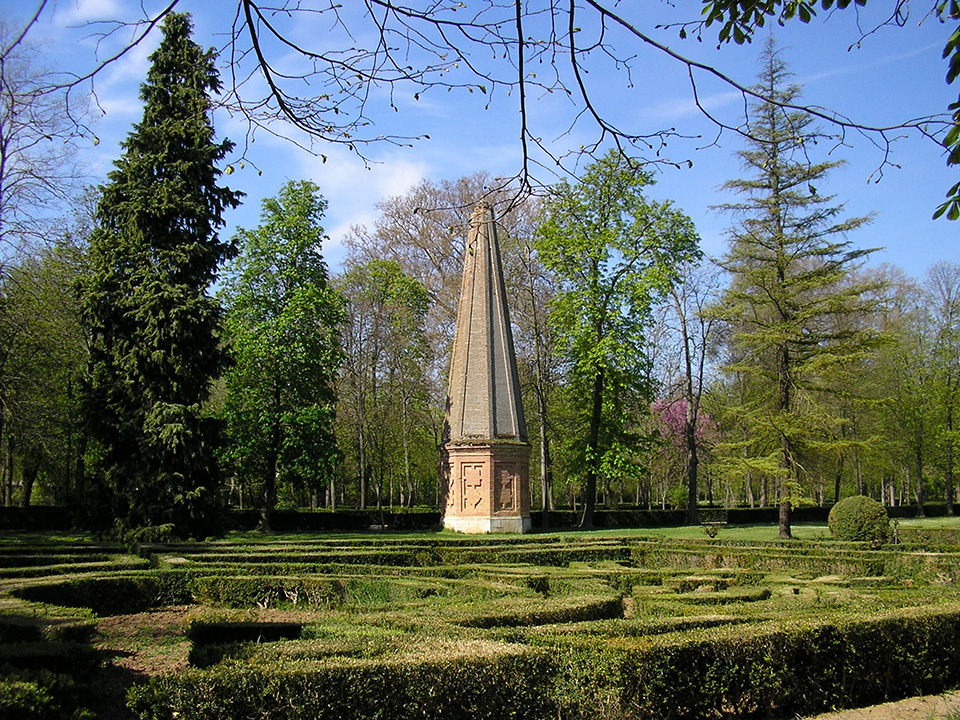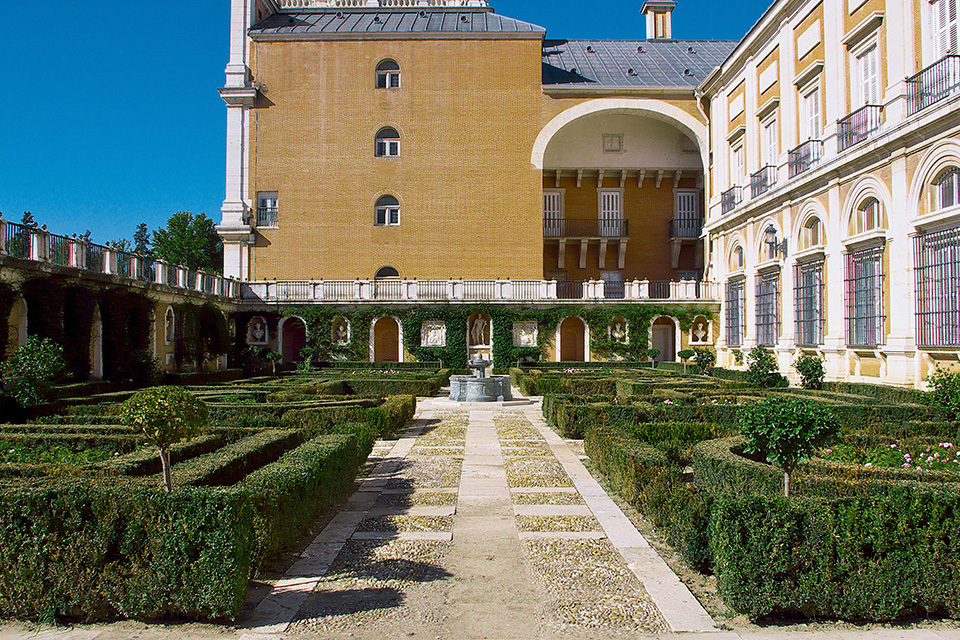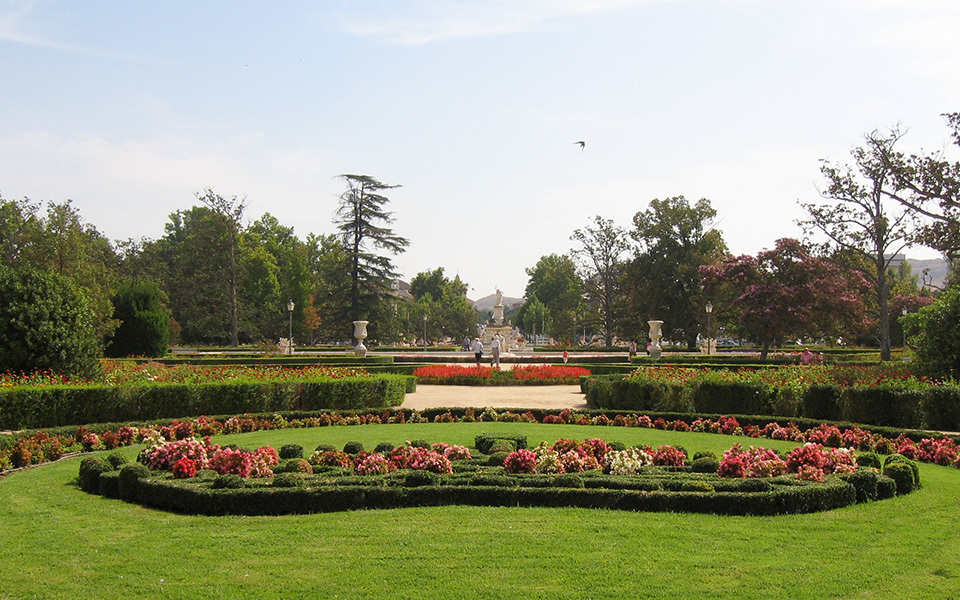Author: Sixto D. Lozano
Spanish Landscape Architecture: Alcazar of Sevilla Gardens
Have you ever been in a garden built along 1100 years? Many gardening styles can be appreciated in the Alcazar of Sevilla, it is like a history book.
It is known Muslim heritage in architecture and gardening in Spanish cities like Cordoba and Granada, but there are other places where we can appreciate the detail, elegance and splendor of this artistic style. When we travel to sunny Sevilla we can not miss the Real Alcazar, it is dated back to the tenth century and declared World Heritage Site, with over a thousand years of history, it is the older Royal palace in active in all Europe. All architectural and gardening styles from the Muslim era in the Iberian Peninsula to the twentieth century are reflected in one way or another in the evolution of the building.
Door of the Lion
The Real Alcazar of Sevilla is a great monument of immense beauty. Its palaces and gardens manifest the wisdom, character and sensitivity of this city. The gardens of the Alcazar are a compendium of the history of gardening, all of them are structured by an Arab structure set on the primitive Andalusian gardens of the original “alqsar”, an Arabic word meaning “the royal house or room of the prince”. In mid-fourteenth century the king of Castilla Pedro I “the Cruel” ordered the remodeling of the building and grounds making use of Arab artists, reaching the Moorish appearance, it is now preserved and amazed by its richness and ornamentation.
Patio of the Ladies
The appearance of the grounds is different from the Alhambra of Granada, here they are bright and spacious gardens with a geometric pattern of closed areas, respecting the privacy of the human scale, successive spaces communicate with each other through gates and fences, urging us to cross them. With the passage of time the old orchards were transformed into exquisite gardens gratifying the senses, always accompanied by water, it is a symbol of purity which gives exuberance and radiance to the vegetation. Water always accompanies our ride with its sound, running through ditches and canals, appearing relaxed in the many pools or trembling in delicate sprays, it appears more sound in Renaissance fountains and grottos later time.
“Alberca” of Marchena Door
The gently sloping terrain creates staggered spaces from which we can observe the extent of the gardens, the visitor is surprised by effects and views on other spaces. The gardens descend to the river Guadalquivir on three terraces. The first terrace is composed of three small courtyards where we can appreciate the more refined Mediterranean garden with all elements of Arabic landscaping, water, walls, pavements and drawings of clay tiles that cover pools and fountains. The vegetation here is typical Mediterranean vegetation, cypress, magnolia, lemon, orange, boxwood and myrtle.
Patio of Levies
Garden of Prince
The second terrace attached to the palace, is a grid divided by hedges of boxwood, with sources sited at crossings. It is the busiest, where tourists gather outside the building before entering the grounds. In the third terrace spaces are broader with traces of later times, King Carlos V left his mark here building a delicate pavilion fully integrated into the landscape of the environment.
Carlos V pavillion
Interior of Carlos V pavillion
Other gardens were built with an Italian Mannerist style in the early seventeenth century. From this period are the Mercury Pond, originally irrigation pool, the Garden of the Ladies and the Gallery of the Grotesque that transformed the Muslim wall creating a large elevated walkway, from which visitors contemplate the whole of the monument and even the Cathedral. Also the English landscape style has its place with plenty of trees, the Garden of English, and more recently, as the French style in the Garden of Poets.
Mercury Pond
Fountain of the Fame
View from the Gallery of the Grotesque
Garden of the Poets
There are other examples of Hispano-Arabian gardening in the city, including the magnificent Patio de los Naranjos in the Cathedral, but it is in small inserts courtyards inside the Sevillian houses where we perceive the spirit and topicality of the Mediterranean gardening style.
“Patio de los Naranjos” in the cathedral
Photographs by Sixto D. Lozano
Sixto D. Lozano is a Landscape Architect in Valencia, Spain sutterlozano|studio
Spanish Landscape Architecture: Barcelona Botanical Garden
One of Spain’s crown jewels, Barcelona Botanical Garden is located on Montjuich´s mountainside between the Castle and the Olympic Stadium. Today, I’d like to bring you on a journey into a garden-mountain landscape that captures the perfect design balance between nature and the city of Barcelona.
 The entrance to the Barcelona Botanical Garden is marked by four large folding doors.
The entrance to the Barcelona Botanical Garden is marked by four large folding doors.
 This botanical garden specializes in flora characteristic of areas homoclimatic with the coveted Mediterranean climate, such as places like South Africa, Chile, southern California, and the Canary Islands. Because of this setup, visitors can take a tour “around the world” so-to-speak through the varied Mediterranean plant palettes. Many plants at risk of disappearance are also preserved on this site.
This botanical garden specializes in flora characteristic of areas homoclimatic with the coveted Mediterranean climate, such as places like South Africa, Chile, southern California, and the Canary Islands. Because of this setup, visitors can take a tour “around the world” so-to-speak through the varied Mediterranean plant palettes. Many plants at risk of disappearance are also preserved on this site.
 The design of the garden was inspired by the fractured and geometric form of the on-site architecture. The landscape is laid out as a triangulated grid that adapts to different formations of vegetation, giving the designers the opportunity to place plantings in mosaics and transepts, depending on their different growing conditions.
The design of the garden was inspired by the fractured and geometric form of the on-site architecture. The landscape is laid out as a triangulated grid that adapts to different formations of vegetation, giving the designers the opportunity to place plantings in mosaics and transepts, depending on their different growing conditions.
 The Garden was designed by a multidisciplinary team comprising architects, Carles Ferrater and Josep Lluís Canosa; landscape architect Bet Figueras; horticulturalist Artur Bossy; and biologist Joan Pedrola. Two fundamental considerations were taken into account.
The Garden was designed by a multidisciplinary team comprising architects, Carles Ferrater and Josep Lluís Canosa; landscape architect Bet Figueras; horticulturalist Artur Bossy; and biologist Joan Pedrola. Two fundamental considerations were taken into account.
The first was landscaping. The plants are arranged geographically into the five Mediterranean regions of the world, and within each area, they are grouped by ecological affinity to represent natural landscapes.
RELATED STORY: Spanish Landscape Architecture: Classical Gardens
The second was to design the Garden in such a way that the mountain itself would provide the topographical layout for each group of plants. This meant taking advantage of the natural relief to design the network of pathways, avoiding major earthworks as much as possible.
To follow the terrain’s natural contours, a triangular-shaped network of paths was created. The pathways take visitors through 87 exhibition units known as phytoepisodes. The geometric layout of the garden is informed by botanical and ecological systems, as well as in the use of the concept of morphological convergence in vegetation, making the garden a tool of high scientific value.
 The buildings that exist in the garden are placed strategically at the upper access on the highest part of the route through the garden to remain as conspicuous visual references observable from the city of Barcelona.
The buildings that exist in the garden are placed strategically at the upper access on the highest part of the route through the garden to remain as conspicuous visual references observable from the city of Barcelona.
RELATED STORY: Landscape Architects EMF Transform Urban Wasteland into Barcelona Pocket Park
Since the Garden serves as a source of information about botany and nature, the space also provides educational activities designed for everyone from professionals and enthusiasts to students and amateurs. The inclusion of educational programming promotes public awareness of and fosters concern for nature.
More Barcelona Botanical Garden
Photographs © Sixto D. Lozano and Wikimedia
Sixto D. Lozano is a Landscape Architect in Valencia, Spain sutterlozano|studio
Spanish Landscape Architecture: Biennial Rosa Barba 2014
15 years of European Biennial of Landscape Architecture Barcelona.
The First European Biennial Landscape Architecture was organized in 1999. This event was pioneering at the time and created a way to know Landscape Architecture in Spain and in Europe. The initiative is now a meeting point for Landscape Architects, students and people interested in Landscape Architecture around the world.
The Biennial is a theoretical symposium to the professional discussion and promotion of good practices by the participans selected for the Rosa Barba European Landscape Prize. Other events as professional exhibitions, student projects, catalogues, guided tours and ephemeral interventions in the city are developed along the Biennial.
Rosa Barba Prize structures the Biennal, its finalists are the first conference speakers and the center of the materials developed. New talent and trends in Landscape Architecture are discovered by reconizing the value of the best practices of contemporary Landscape Architecture.
The winners in previous editions show the importance of the event: Peter Latz, Isabel Bennasar, Catherine Mosbach, Paolo Bürgi, RCR, Paysage, Kristine Jensen Nicolai, Ganit Mayslits Kassif and Udi Kassif Architects, Martí Franch and Ton Ardévol.
Each of the seven previous Biennals were focused in a different idea about the landscape. “Remaking Landscapes” (1999), “Gardens in Arms” (2001), “Only with Nature” (2003), “Landscape: a Product – a Production” (2006), “Storm & Stress” (2008), “Liquid Landscape” (2010), “Biennial versus Biennial” (2012). However, by the hand of its international Rosa Barba landscape prize, this edition will broaden its scope to worl wide contemporary international landscapes architecture. The theme this year is “A landscape for you”. The announcing of this year’s event suggests interest in discovering new ways of action, while exploring inhospitable areas and guiding discussion towards rethinking old certainties and providing new sensitivities certitudes. “A landscape for you” wants to be present at the discussion of what should be the landscape design and planning nowadays, aiming to provide a plausible and exciting future.
During the 7th edition, the European Biennial of Landscape Architecture was recognized as a consolidated structure in Europe. The present edition wants the progressive internationalization as announced by the Manifesto read during the last symposium. The symposium content shall give answres to the role os Landscape Architecture in the current world wide crisis, while maintaining the high level of the guest speakers discourse on the world stage. Moreover new objetives will be achieved in for the 8th edition: mainly to bring the Biennial to society helping a greater recognition of the value of the social role of Landscape Architecture.
The eleven finalists the Rosa Barba Prize selected by the International Jury, publicly present their projects as last step towards choosing the winner, to be announced during the Awards.
Rosa Barba Prize Finalists:
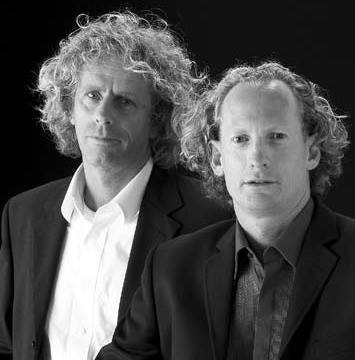
Philip Coxall_McGregor Coxall
Ballast point, Birchgrave, NSW, Australia.
Arqueología de Paisaje Ruta de la Amistad, Ciudad de México, México.
Kongjian Yu_Turenscape
Quinli stormwater park, Heilongjiang, Harbin. China.
Iñaki Alday & Margarita Jover
Parque de Aranzadi, Pamplona, España.
Dietmar Straub & Anna Thurmayr
Folly Forest / a Dance Floor for 100 Trees, Manitoba, Winnipeg, Canada.
Germán Del Sol Guzman
Termas geométricas, Región de los Lagos, Parque Nacional Villarrica, Chile.
Margie Ruddick
Queens Plaza, New York, US.
Johanna Gibbons_J&L Gibbons
Making Space in Dalston, London, UK.
Perry Lethlean_TCL Studios
North Wharf Promenade and Silo Park, Auckland, New Zeland.
James Corner_Field Operations
The High Line, New York, US.
Enric Batlle & Joan Roig
Landscape restoration of the Vall d’en Joan landfill site, Garraf, Barcelona, España.
More Information about the Biennial:
Photographs and data © Biennial Rosa Barba
Sixto D. Lozano is a Landscape Architect in Valencia, Spain sutterlozano|studio
Spanish Landscape Architecture: Turia Garden
Valencia seized the contemporary landscape architecture spotlight on 2011 when Gustafson Porter won an international competition to design Spain’s 60 hectare Valencia Parque Central. While that high-profile project is under construction, I’d like to bring your attention to another very important green space that already exists in the city of Valencia: the Turia River Garden.
The Turia Garden is an exceptional example of world-class landscape architecture. A linear park that stretches 8 kilometers long and 200 meters wide, this massive garden traverses the entire city, from La Huerta in the west to the docks in the east. This lush green park is one of Valencia’s most distinguishing features and can be likened to a big green crack in the urban fabric that offers reprieve and a straight path from the Mediterranean waters to the back country.
XIX century etching
Behind Turia’s stunning appearance, however, lies a rather uncommon and tragic story. In 1957, a great flood overflowed the river Turia and caused numerous deaths and injuries. Officials were forced to divert Turia’s natural riverbed and create an artificial channel and a new mouth. Initially, an urban highway was planned to be built overtop the old river, but the 1970s rise in democracy and open protest changed those plans. Opponents to the highway shouted “El llit del Túria és nostre i el volem verd!” (The bed of the Turia is ours and we want it to be green!) and their efforts successfully transformed the old riverbed course into the great green space and hallmark of Valencia.
Great Flood of 1957
Site Plan of the park 2014
The colors, aromas, water, and lights of Valencia dance and peek through through the trees and plants as we walk through the linear park. These glimpses of Valencia’s urban fabric accompany us on our journey down the car-free Turia, where people are free to walk, run, cycle, or just sit on a bench and people watch all day. The Turia Garden is the largest green lung and open air leisure space of the city and attracts thousands of tourists to Valencia. Once inside the park, it seems like everyone–the young and the elderly, lovers and families, children and athletes–can coexist peacefully in the same place.
View towards Mediterranean Sea in the east
Walks in the garden
Spending a day inside Turia Garden is like walking past 100 gardens at the same time. Due to the great length of the park, Turia was developed in phases, which led to the creation of a variety of landscape styles, all of which are united by the presence of water. The different sections are designed by Landscape Architects with very different views of landscape and gardening. In some parts of the garden, the water is used as a historical element to conjure up images of the former river. In the area of Rovella irrigation dam, for instance, the water is set as the backbone of the garden, where it cuts through the garden and mimics the path of a river. In the section where it integrates with the Palau de la Música, however, a sense of the monumental Roman tradition of public space is perceived and Arabic-style landscaping, water design, vegetation and shade are used.
(Related Story: Spanish Landscape Architecture: Classical Gardens)
Area of Rovella irrigation dam
“Palau de la Musica” gardens
In other areas, an environmental approach was used to recreate the typical Mediterranean river ecosystem complete with a rich forest of surrounding pines, cypress, elms, palm trees, lindens, mulberry trees, willows, and other species that invite you to view a landscape of hills and trails. Hundreds of species both native and exotic create a splendid space from both a botanical and environmental point of view. Rose and perennial gardens, ponds, labyrinths are inserted amongst these Mediterranean forests. The “bottle tree” forest depicted below, for instance, is one of the more strange and eye-catching horticultural delights in the park.
“Bottle trees” forest
One of the last major sections of the park is the Parc de Capçalera (Header Park). Located in the northwest corner next to the new zoo, this section features a large pond for stormwater management that connects with the Turia River Metropolitan Park upstream. The Parc de Capçalera is an idealization of the natural ecosystem of the river with the typical vegetation of riparian areas. Here a large hill allows us to look toward the Huerta of Valencia and the topography of the surrounding mountains.
“Parc de Capçalera” in the west beginning of Turia Garden
Architectural highlights are scattered throughout the park, such as the numerous medieval bridges connecting both sides of the channel. These authentic monuments to the city offer us a greater glimpse into Valencia’s history.
Etching of a “Naumachia” (sea battle recreation) in the Turia river in 1755
Puente de Serranos
Puente del Real
Puente del Mar
Puente de Aragon
The Turia Garden is a space that articulates numerous facilities and monuments in the city, not only in the margins (IVAM Museum of Modern Art, Pio V Museum of Fine Arts, medieval towers of Serranos, ancient gates and walls of the city, the Botanical Garden and Viveros Gardens, shopping malls, government buildings, the Palau de la Música, the zoo, just to name a few…) but also inside the channel where there are sports fields, attractions for children, or the already well known City of Arts and Sciences.
Gulliver Giant attraction
San Pio V Museum of Fine Arts
City of Arts and Sciences
Once you spot the giant blue “Agora,” you’ll know that you’ve reached the end of the journey in the park–at least for now. The east end of the Turia Garden is still undergoing construction, and when finished, will finally link the city and the river with the Mediterranean Sea.
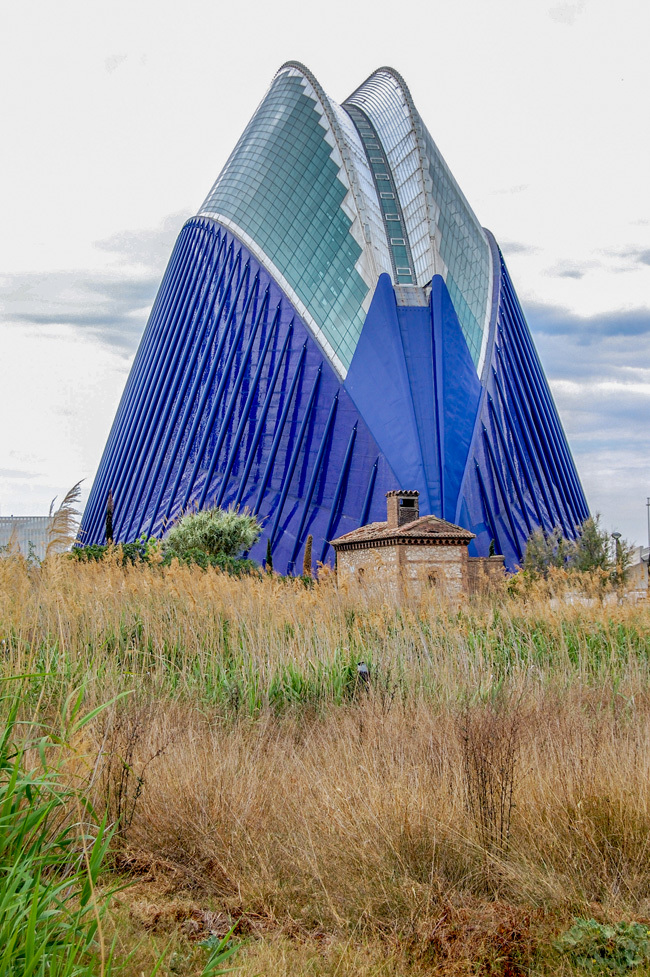 “Agora” in the east end of Turia Garden
“Agora” in the east end of Turia Garden
Photographs and plans © Sixto D. Lozano and Wikimedia commons
Sixto D. Lozano is a Landscape Architect in Valencia, Spain
Spanish Landscape Architecture: Classical Gardens
Today I invite you to take a trip through Spain to learn about the classical gardens of Spanish Landscape Architecture, both in history and in contemporary times. We all know the major achievements of the 17th century garden designer André Le Nôtre, from his work on Versailles to Vaux-le-Vicomte. What is equally as remarkable, however, is how his cultural and artistic influence spread throughout the European countries. Some of Spain’s finest examples of classical gardens, including El Retiro Park in Madrid and the gardens of the palaces of La Granja in Segovia and Aranjuez, were created by gardeners and hydraulic experts brought in from Italy and France.

El Retiro Park
When entering El Retiro Park from Paseo del Prado in central Madrid, the first thing you will notice are its large gates alluding to the royalty who once owned the property. Because of the gates’ stately presence, it was surprising to learn that the park was originally created as a spiritual and contemplative garden for its founder, King Felipe II. After its first broke ground in 1633 during the Renaissance, the garden was then expanded over the span of four centuries to become one of the largest parks in Madrid. It finally opened to the public in the late nineteenth century and is now the most popular park in the city.
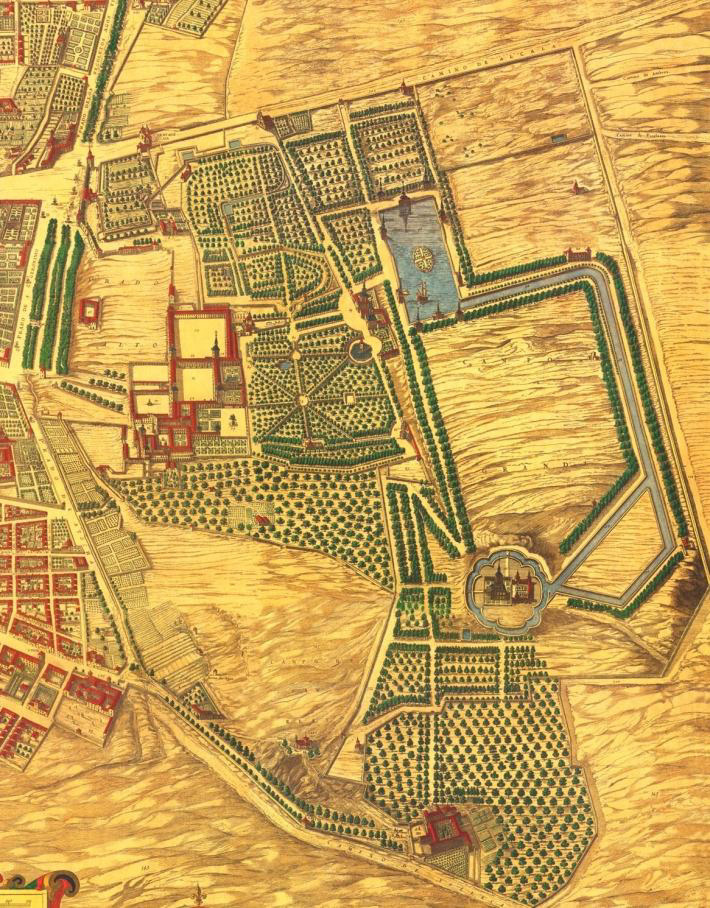 El Retiro, Plan of Teixeira 1656
El Retiro, Plan of Teixeira 1656
The park’s main paths and axis are extensions of the city streets that lead to the main areas and focus on long views and longitudinal perspectives. The park invites you to walk between rows of plane-trees, elms and oaks. Despite the steep slopes of the terrain, the flow of people leads immediately to the heart of the park, the great waterway pond centered on the equestrian statue of Alfonso XII.
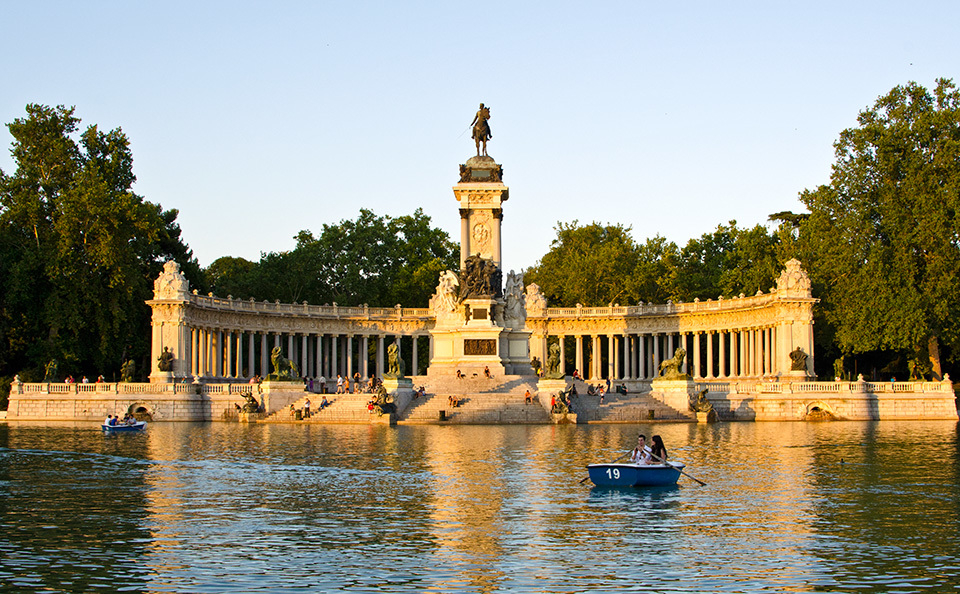 Alfonso XII monument
Alfonso XII monument
The park is a conglomerate of spaces difficult to define, seemingly without a unified plan. One of the virtues of the park is the richness and variety of tree plantations and the white sculptural decoration that punctuates the rows of trees.
The park hosts multiple activities, making the space one of the most popular areas in Madrid. Thousands of people come for the year-round markets, fairs, cafes, and open-air museums. Magnificent architectural examples characterize different areas of the park. The nineteenth century Crystal Palace, for instance, is a museum for exhibitions of contemporary art and exudes a romanticist atmosphere. It is designed in the pinturesque gardening style, characterized by specimens of Taxodium distichum, with its roots submerged in an artificial lake.
A botanical trail leads you to the other lush areas of the park that show off the poplars, rose gardens (the roses were imported the most important gardens in Europe), perennial gardens, and Cecilio Rodriguez gardens. The French Parterre is featured in the park as well, and its strict symmetry is broken only by the presence of two large cedars and a cypress–the oldest tree in Madrid–a Taxodium from Mexico that is over 400 years old.
El Parterre
El Retiro has many fountains, including the Fountain of the Fallen Angel, possibly the only monument dedicated to the devil in the world, and represents the moment when Lucifer is expelled from Paradise.
La Granja de San Ildefonso
If we go north of Madrid to the city of Segovia, you’ll find the magnificent Palace of La Granja. Its gardens are the epitome of the Baroque garden style in Spain. Located in a boxed enclave in the foothills of Sierra de Guadarrama, the garden is modeled after the French gardens with its parterres, high hornbeam hedges and woodlots that forming a rectangular frame. French gardeners brought by Felipe V in the mid eighteenth century build this garden in the likeness of Versailles.
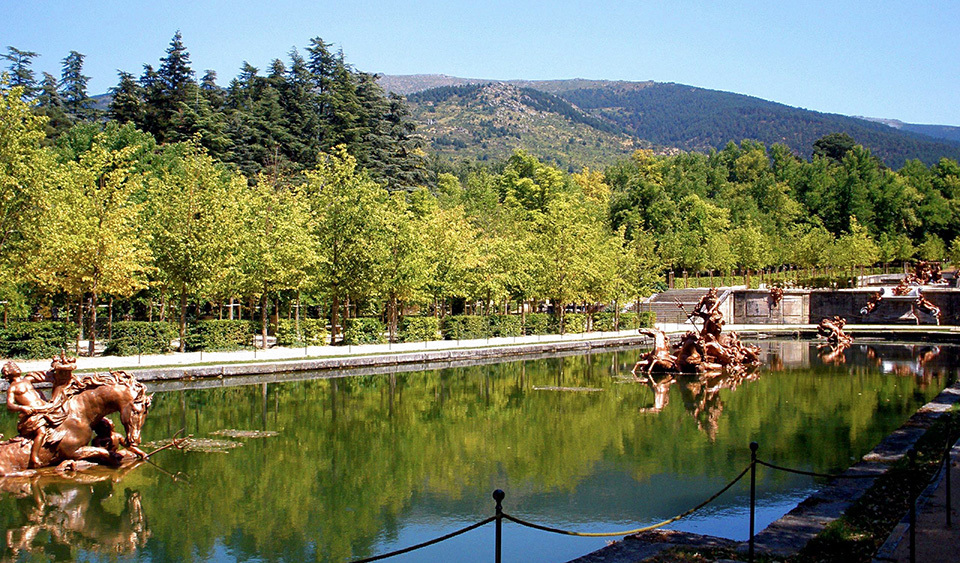 To fully understand this garden, you must visit its eleven magnificent fountains, which are combined with sculptural groups with mythological references, The Bath of Diana, The Fame, and The Horse Race fountains fill the space with water and sound. The “Sea” is a large lake located at the top of the site and collects water from the Valsaín mountain to feed all the fountains and cascades.
To fully understand this garden, you must visit its eleven magnificent fountains, which are combined with sculptural groups with mythological references, The Bath of Diana, The Fame, and The Horse Race fountains fill the space with water and sound. The “Sea” is a large lake located at the top of the site and collects water from the Valsaín mountain to feed all the fountains and cascades.
A large parterre in front of the main facade of the palace occupies the central axis with a dramatic waterfall that creates structure to the garden. The Labyrinth is a main point of interest and is inserted into a forest of oaks, elms, linden, beech and conifers.
When you come to visit the garden, you should try and come either during late spring or fall/winter. The changing colors of the leaves and fallen snow on the sculptures and fountains make for amazing compositions.
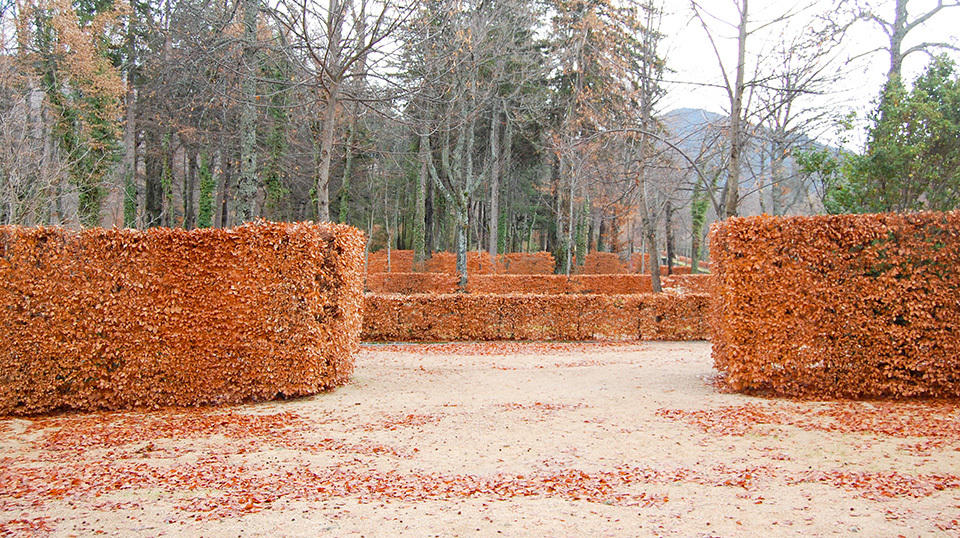 Hedges of Carpinus betulus
Hedges of Carpinus betulus
Aranjuez Gardens
Those headed south of Madrid should visit the Aranjuez Gardens located on the banks of Tajo river in a privileged microclimate. The gardens consist of different grounds: “Jardin de la Isla” traced in the sixteenth century for Felipe II in the Italian Renaissance style; “Jardin del Rey” near the palace; “Jardin del Principe”; “Jardin de Isabel II” in the last set; and “El Parterre” that’s situated opposite the palace and offers an organized French scene with magnolias, vases and trimmed hedges.
Although the grounds aren’t as rational and symmetrical as André Le Nôtre’s landscapes, the rich vegetation and Platanus trees gives the meandering place a special charm that creates a quiet respite from the traffic of Madrid.
Other classical gardens that deserve a visit include El Pardo Gardens and Alameda de Osuna in Madrid and San Lorenzo del Escorial Gardens.
Photographs © Sixto D. Lozano and Wikimedia Commons



